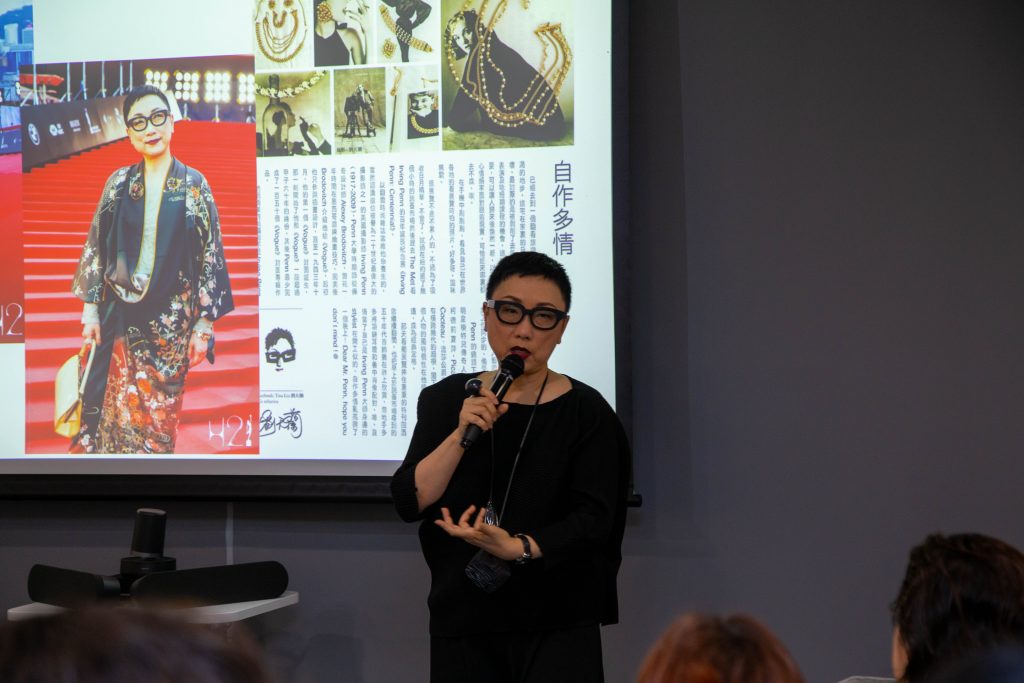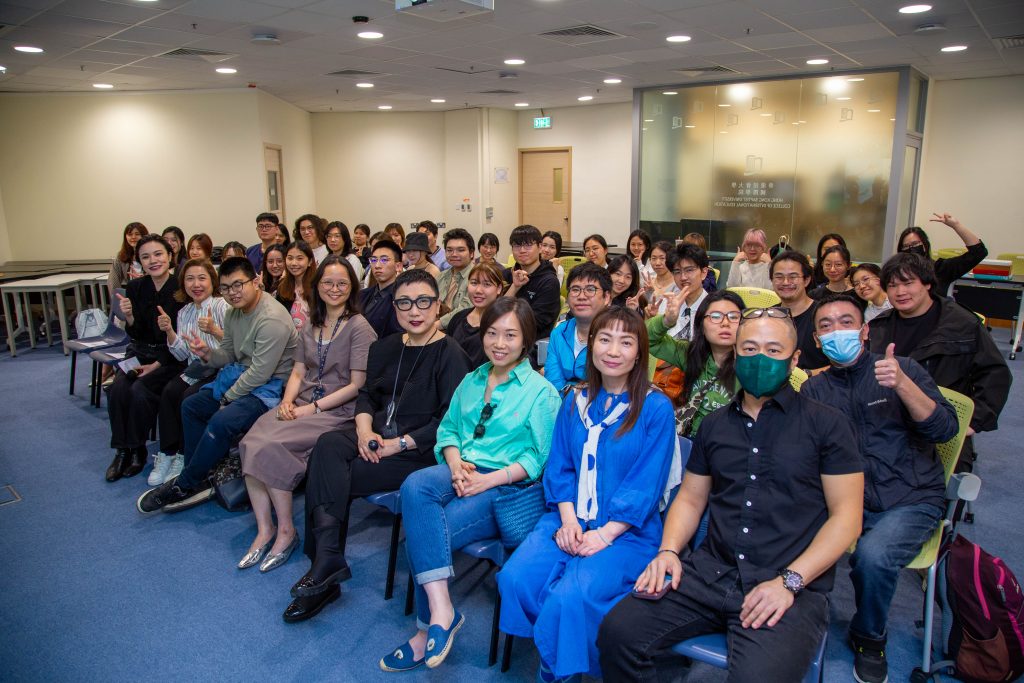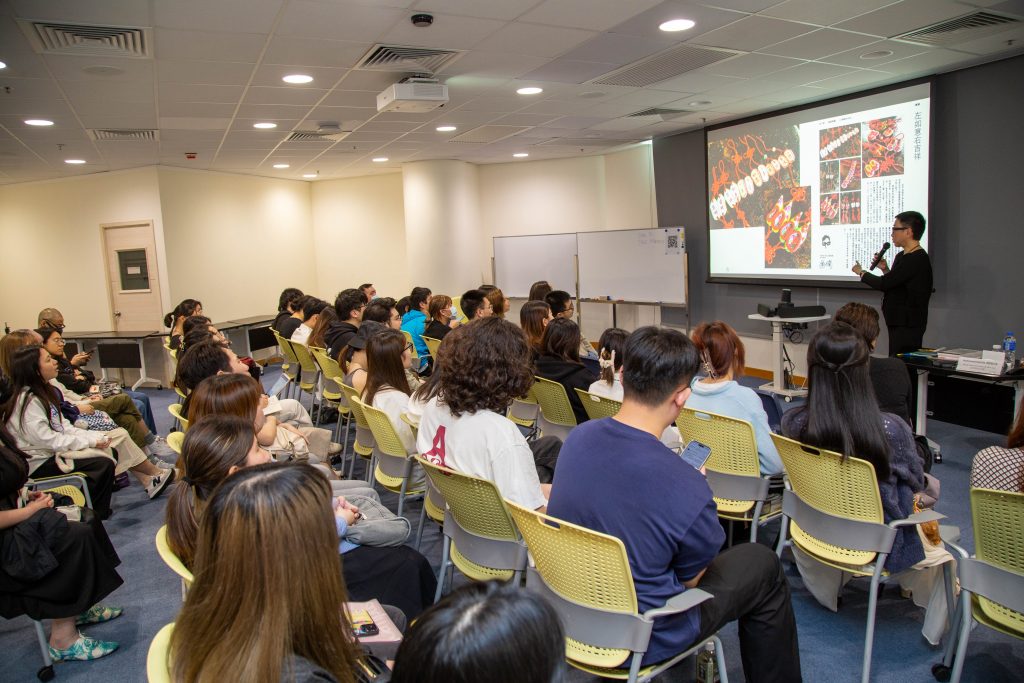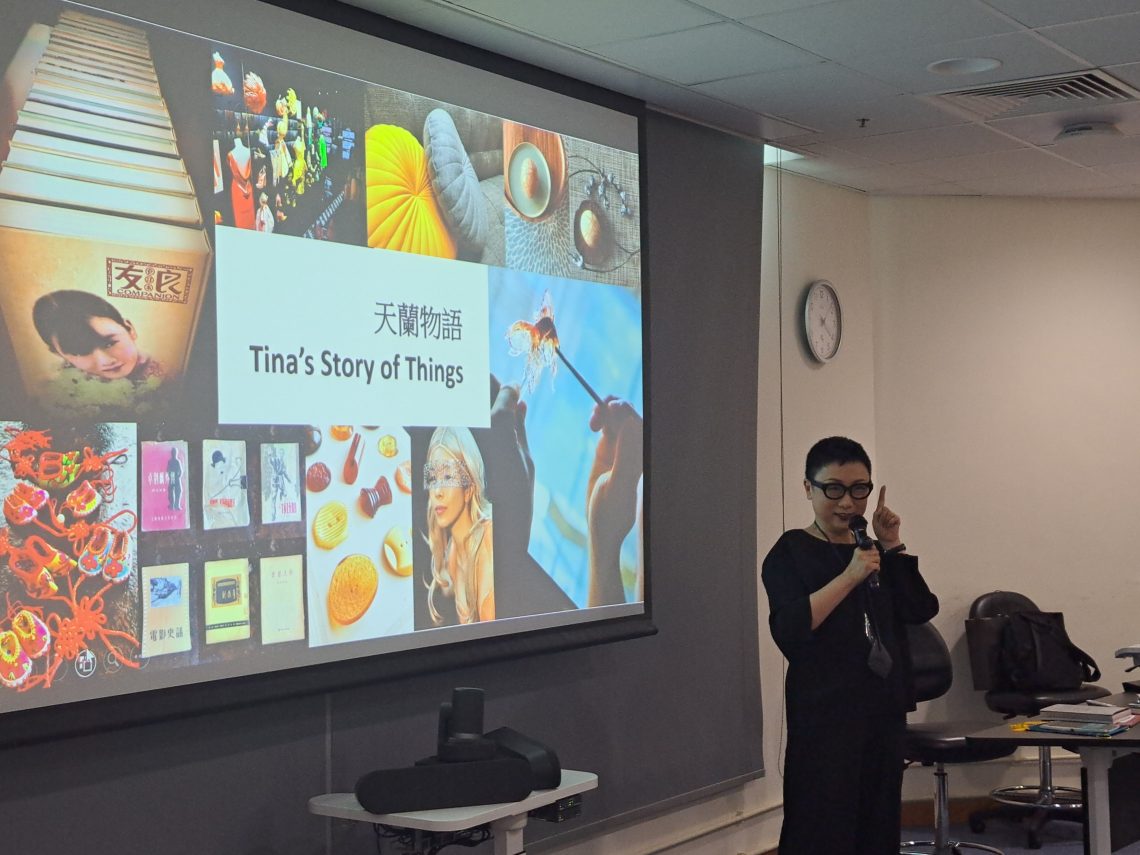身在萬物急促數位化的時代,互聯網使資本主義社會的物慾更橫流,但人與物之間的關係卻更疏離。早前,人文及語言學部的文化研究及創意產業文學士(榮譽)學位課程請來劉天蘭女士(形象指導、策展人、出版人)來分享她與「物」的種種緣分和邂逅。
演講伊始,天蘭從童年娓娓道來,跟同學細數她各式各樣收藏品。翻看自小從報章剪下早逝父親的文章,見字如見人;別人買名牌,她偏好復古的胸針、鈕扣、粉盒、手袋,琳琅滿目;還有某趟日本之旅興之所至買下的筷子座、在世界各地大城市書報攤找到的絕版寶物;以及給女兒Yoyo的廿一歲生日禮物:整箱的兒時錄音帶滿載成長的回憶。「我像一個拾荒者」,她自嘲。可是她拾的,是時代的荒,在那些美好歲月散落的閃爍的碎片。
但撿拾之樂,又豈止於個人的收藏?2023年,天蘭跟幾個香港電影美術學會的朋友合力,於香港文化博物館設展「無中生有」,展出香港電影數十年來的戲服和道具,重現不少新舊經典的場景。而今年,她又帶領另一團隊,盤點、整理和紀錄邵氏片場數萬件戲服。這些浩大的工程雖然艱辛,但她卻樂在其中。誠如Bill Brown在〈物論〉中提到,物品真正脫離其客體(object)身分,轉化為東西(thing)的一刻,正是在它不再有用之時。這些曾經用以築夢之物,在鏡頭關掉後,變得更有重量,只因它們就是我們活生生的夢。
最後,天蘭提到她近來開始創作的拼貼畫以及喜慶時節特地做給各方友好的茶玉子。我們的日常充斥那麼多東西,當中很多都值得我們細味欣賞。人生於世,本無一物;但若果無物,實如寄塵。她寄語:「玩物,但不可喪志!」
Tina Liu on Materialism: Tina’s Story of Things
In the age of the internet and increasing (dis-)connectedness, we are surrounded by an excess of material things that simultaneously suffocates and alienates us. On a fine afternoon In April, Bachelor of Arts (Hons) in Cultural Studies and Creative Industries of Division of Arts and Languages had the pleasure to invite Ms. Tina Liu (image director, curator, editor) share with us her take on things — as embodiment of beauty, memory, and culture.
Tina began to trace her personal relationship with things from her late father’s writings, to vintage brooches, buttons, powder cases, handbags collected throughout the years, delicate chopstick rests she purchased on a trip to Japan, old books and magazines from across the world, and childhood recordings of her daughter Yoyo’s. She loves these things — collectibles — for their beauty and, more importantly, how they are, each alone, the crystallization of a singular moment in an epoch.
But her love of things extends beyond the personal. In 2023, she and a few other friends at the Hong Kong Film Arts Association put together an exhibition, Out of Thin Air, that showcases the sets and costumes from notable local movies, old and new. This year, Tina is working on another project of a similar nature: sorting out the costume archives for the Shaw Studios. To her, these are more than historical relics; they are the very fabric on which the dreams and culture of a people were woven. To quote Bill Brown (2001), “We begin to confront the thingness of objects when they stop working for us,” rearranging film props is not to resurrect them, but to remember and reimagine the many ways that they have enlivened us.
At the end of the sharing, Tina showed us the tea eggs and collages that she made, for fun, “My friends once persuaded me to sell the eggs at their consignment shop, but it was too much pressure that it would drain all the fun.” Perhaps, beyond all talk of grandiosity, our relationship with things are but a grounding sense of playfulness that affirms the truest and most basic of our humanity: to have and to hold.

Tina began to trace her personal relationship with treasures collected from her childhood.

The Division of Arts and Languages invited Ms. Tina Liu, an image director, a curator, an editor, to share her story of things.

Tina showed to students the many little things that she appreciated in life.




